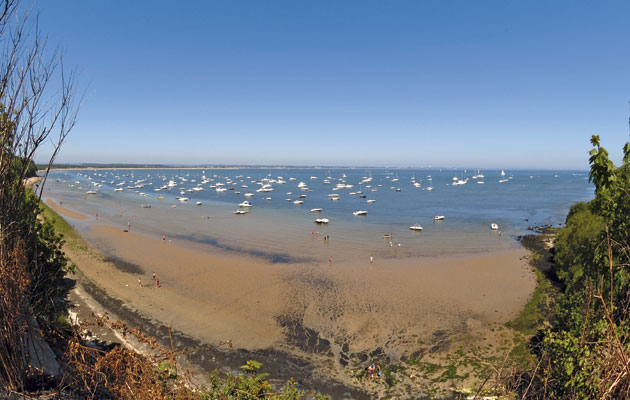23 new Marine Conservation Zones (MCZs) have been announced to protect marine species and habitats around the English coast
The UK Government has announced the creation of 23 new Marince Conservation Zones (MCZs) around the coast of England. These zones are the second of three tranches of sites to be considered for protection as part of a larger project to create a coherent network of marine protected areas around the coast of the UK. Wales, Northern Ireland and Scotland are also undertaking a similar processes to allocate protected areas in their territorial waters.

Studland Bay was dropped from the consultation process and has not been made a Marine Conservation Zone
There are no 50 MCZs around the English coast, covering an area of 7,886 square miles. The areas are both inshore and offshore and range vastly in size. They are spread around the whole coast from the Farnes East site off the coast of Northumberland to the Runnel Stone at Land’s End and Alloby Bay in Cumbria.
The MCZs will protect 45 different species, habitats, geological features and geomorphology, including stalked jellyfish, spiny lobsters, gravel beds and chalk reefs.
Marine environmentt minister George Eustice said:
‘As an island nation, the UK is surrounded by some of the richest and most diverse sea life in the world—from the bright pink sea-fan coral colonies off the south-west coast, to the great chalk reef stretches in the east. It’s vital that we protect our marine environment to ensure our seas remain healthy, our fishing industry remains prosperous and future generations can enjoy our beautiful beaches, coastline and waters.
“By designating these new Marine Conservation Zones and creating a Blue Belt of protected areas around the country, we can better protect our environment through careful marine management in years to come.’
The first tranche of 27 MCZs were allocated in 2013. A final third tranche will be proposed later this year, consulted on in 2017 and designated in 2018. Consultations will also be launched in January 2016 for the creation of new marine Special Protection Areas (SPAs) to protect areas used by birds for activities such as feeding, preening and bathing, and Special Areas of Conservation (SACs) for harbour porpoise.
Joan Edwards, The Wildlife Trusts’ head of Living Seas, said:
‘Marine protection is vital to us all, no matter where we live. Our seas provide the oxygen for every second breath we take, the fish on our plates and so much more. The designation of 50 Marine Conservation Zones to date is a strong step forward but there is much still to do. It is vital that appropriate management is implemented as soon as possible. We will continue to work with Government to ensure that this happens and to achieve the much-needed ambitious and comprehensive third and final tranche.’
The consultation period for the new MCZs between January and April 2015 saw over 9,000 people contribute their views to the process of designating the zones.The RYA and British Marine have been heavily involved in the consultation process and have ensured that the interests of sailors are taken into account.
British Marine, the UK marine industry association, has lobbied to ensure that MCZs are only designated on the basis of sound scientific evidence. Brian Clark, head of external relations at British Marine said:
‘Sailors should not be alarmed about the designation of an MCZ zone. Depending on the features being protected, the management measures within that zone may not have an impact on sailors at all, or may only apply to a small area within the zone. Management measures in first tranche MCZs have had little or no impact on recreational boat users.’
The RYA is also working to avoid unnecessary regulation. Emma Barton, RYA planning and environmental manager said:
‘The RYA examined the proposed management scenarios for each site and pressed for all options for voluntary initiatives to be exhausted prior to consideration of any statutory management measures.’
The 23 new Marine Conservation Zones are:
North Sea
Fulmar
Farnes East
Coquet to St Mary’s
Runswick Bay
Holderness Inshore
Cromer Shoal Chalk Beds
South East
The Swale Estuary
Dover to Deal
Dover to Folkestone
Offshore Brighton
Offshore Overfalls
Utopia
The Needles
South West
Western Channel
Mounts Bay
Runnel Stone
Newquay and The Gannel
Hartland Point to Tintagel
Bideford to Foreland Point
North-West of Jones Bank
Greater Haig Fras
Irish Sea
West of Walney
Allonby Bay






